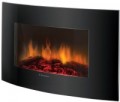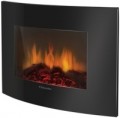Max. heating area
A very conditional parameter that slightly characterizes the purpose based on the size of the room. And depending on the height of the ceilings, room layout and equipment, actual values may vary significantly. However, this item represents the maximum recommended area of the room that an electric fireplace can effectively heat. In our case, the area is calculated for a standard ceiling height of 2.5 m; for rooms where this height is noticeably different, and the effective heating area will be different. In such cases, it is possible to determine whether the fireplace’s power will be sufficient based on the calculation that for heating 2.5 cubic meters. m of indoor air requires a power of 100 W. The volume of a room can be derived by multiplying the area by the height.
Max. power
The highest power consumed by an electric fireplace during operation. This parameter describes both the amount of electricity consumed (and, accordingly, the load on the power mains), and the amount of heat generated by the device and the size of the room in which it can be used. However, most manufacturers indicate the maximum heating area separately (see below). Nevertheless, if this parameter is unknown, it can be determined from the maximum power using the following formula: for effective heating of 1 m² of the area in a room with a standard ceiling height of 2.5 m is considered sufficient power of 100 watts.
Heating power
It is the heat output of the fireplace. With several intensity settings, the customer can choose the best option for each specific situation. For example, when returning to the house after a long absence, when the room has cooled down, the fireplace can be turned on at full power; if you just need to help the main heating system a little, it is better to use half the intensity so as not to overheat the air and not waste electricity; and so on.
Simulation mode power
The amount of energy consumed by the electric fireplace when operating in flame simulation mode (see "Operating modes"). Since in this mode, it is not necessary to spend energy on heating, the power consumption in it is noticeably lower. Its specific value significantly depends on the principle of flame simulation (see below).

